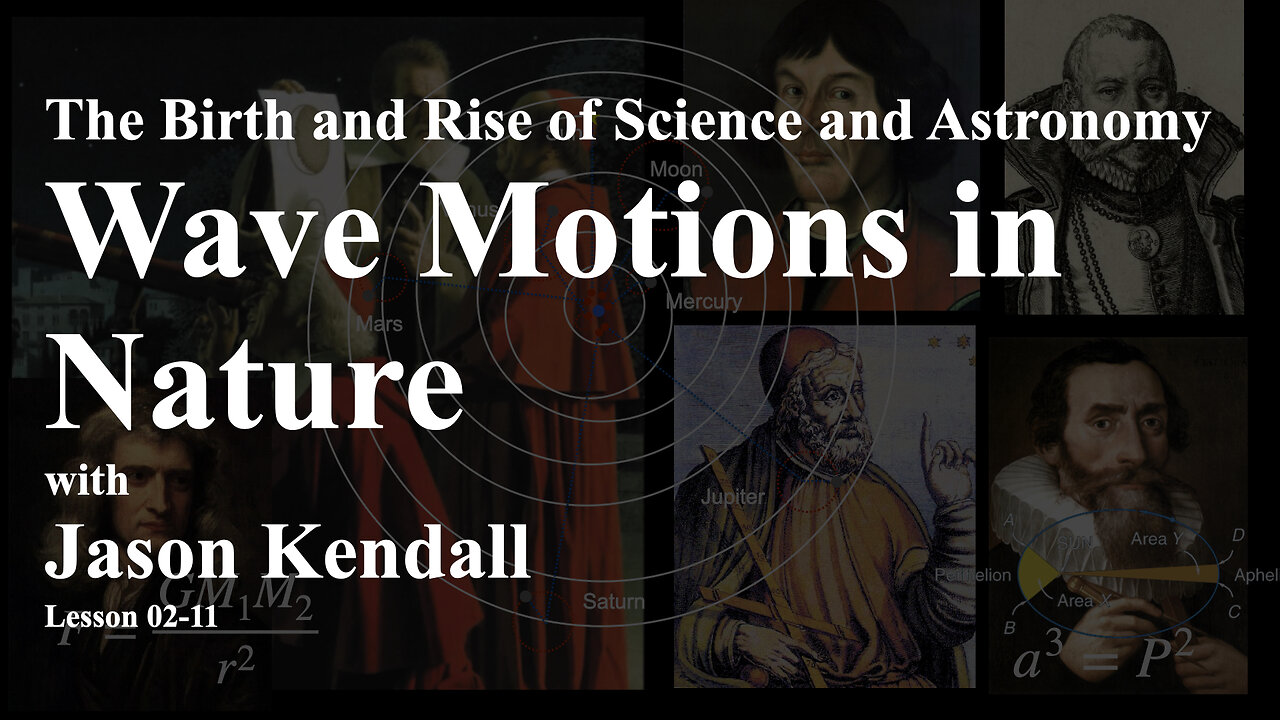Premium Only Content

Exploring the Wonders of Electromagnetic Waves
Light, a fundamental aspect of our universe, operates under two primary frameworks: as a particle and as a wave. This duality is central to our understanding of light, which is formally classified as electromagnetic radiation. The visible spectrum, which constitutes only a small fraction of the electromagnetic spectrum, ranges approximately from 4000 to 7000 angstroms. However, light encompasses a vast array of wavelengths, from those smaller than atomic nuclei to those extending into radio waves, highlighting its diverse nature.
Electromagnetic radiation propagates through various media, and its behavior can be described using wave mechanics. Waves are disturbances that travel through a medium, characterized by their frequency, wavelength, and amplitude. Frequency refers to the number of cycles that pass a given point in one second, while wavelength is the spatial distance between successive peaks of the wave. The relationship between these two properties is defined by the wave speed, which in the case of light in a vacuum is denoted by the symbol ‘c’ and is approximately 300,000 kilometers per second or 186,000 miles per second.
To illustrate wave motion, consider a calm pond. When a disturbance, such as a rock being thrown into the water, occurs, waves emanate outward from the point of impact. This analogy serves to elucidate the basic principles of wave propagation: a wave can be represented as a series of peaks and troughs, with the frequency determined by the rate of disturbance. For example, if one were to create waves by repeatedly dipping a stick into the water, the resulting frequency could be quantified in terms of how many times the stick interacts with the water in a given time frame.
The speed of the wave is calculated using the equation: speed = wavelength × frequency. Thus, if one knows the wavelength of a wave and its frequency, one can determine the speed at which it travels. Conversely, alterations in wavelength and frequency are inversely related; as the wavelength increases, the frequency decreases, and vice versa, provided the speed remains constant.
Amplitude, another essential characteristic of waves, represents the height of the wave from its rest position. It is indicative of the energy carried by the wave; higher amplitudes correlate with greater energy. Unlike frequency and wavelength, amplitude does not inherently influence wave speed but is crucial for understanding the energy dynamics of wave motion.
In discussing light as a wave, it is vital to consider the medium through which it travels. Unlike sound waves, which require a medium such as air or water to propagate, light can travel through a vacuum. The historical challenge of identifying a medium for light propagation led to significant advancements in physics, as scientists sought to understand how light could traverse empty space. The speed of light remains a universal constant in a vacuum, yet it may vary when light moves through different media, such as glass or water, where its speed decreases due to interactions with the material.
An essential concept related to light is its wavelength and frequency correlation. The speed of light is expressed as the product of its wavelength and frequency: c = λν, where λ represents the wavelength and ν denotes the frequency. This principle establishes that for any electromagnetic radiation, the product of its wavelength and frequency will always yield the speed of light in a vacuum. As the wavelength increases, the frequency diminishes, and as the wavelength decreases, the frequency increases, illustrating the inherent balance maintained in electromagnetic waves.
The implications of light’s wave nature extend beyond theoretical physics; they have practical applications in various fields, including telecommunications, medical imaging, and astronomy. For instance, understanding the electromagnetic spectrum is crucial in fields such as spectroscopy, where scientists analyze the interaction of light with matter to gain insights into the composition of distant celestial objects. Similarly, the principles of light propagation are foundational in developing technologies such as fiber optics, which rely on the transmission of light signals over long distances.
In summary, light as electromagnetic radiation exhibits both particle-like and wave-like properties, each contributing to our understanding of its behavior. The study of light encompasses essential concepts such as wavelength, frequency, amplitude, and the speed of propagation, all of which are foundational to the field of physics. As we delve deeper into the nature of light, we uncover the intricate relationships that govern its behavior, reinforcing the idea that light is not merely a phenomenon to be observed but a fundamental aspect of the universe that shapes our understanding of reality.
-
 9:03
9:03
MattMorseTV
17 hours ago $22.62 earnedTrump’s America First CALL TO ACTION.
61.6K88 -
 2:18:38
2:18:38
Side Scrollers Podcast
20 hours agoGTA 6 GETS WRECKED AFTER ANOTHER DELAY + India THREATENS YouTuber Over Video + More | Side Scrollers
130K16 -
 18:03
18:03
Nikko Ortiz
1 day agoEBT Meltdowns Are Insane...
18.6K41 -
 17:33
17:33
a12cat34dog
23 hours agoRUMBLE TAKEOVER @ DREAMHACK | VLOG | {HALLOWEEN 2025}
51.3K25 -
 10:48
10:48
GritsGG
16 hours agoWarzone Stadium Easter Egg! Unlock Grau Blueprint EASY!
23.9K2 -
 LIVE
LIVE
Lofi Girl
3 years agolofi hip hop radio 📚 - beats to relax/study to
530 watching -
 1:43:54
1:43:54
TruthStream with Joe and Scott
3 days agoStuey and Elisa V interview Joe and Scott Q, AI, Glutathione, Tylenol etc 11/5 #510
24.8K6 -
 29:15
29:15
BlabberingCollector
2 days agoHarry Potter X Fortnite, Fans Reee Over Trans Rights, NEW Audiobooks Are OUT, Wizarding Quick Hits
38.8K4 -
 1:20:42
1:20:42
The Connect: With Johnny Mitchell
6 days ago $16.62 earnedThe Truth Behind The U.S. Invasion Of Venezuela: Ed Calderon Exposes American Regime Change Secrets
51K31 -
 2:10:18
2:10:18
FreshandFit
9 hours agoAfter Hours w/ Girls
142K42